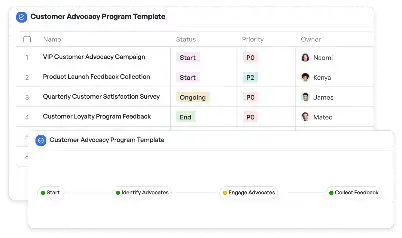Multi-model Endpoint Load Balancing Guide
Achieve project success with the Multi-model Endpoint Load Balancing Guide today!

What is Multi-model Endpoint Load Balancing Guide?
The Multi-model Endpoint Load Balancing Guide is a comprehensive framework designed to optimize the distribution of computational workloads across multiple machine learning models hosted on endpoints. In the era of AI-driven solutions, organizations often deploy multiple models to handle diverse tasks such as image recognition, natural language processing, and predictive analytics. However, ensuring that these models operate efficiently under varying loads is a significant challenge. This guide provides a structured approach to balancing these loads, ensuring optimal performance, reduced latency, and cost efficiency. For instance, in a real-world scenario, an e-commerce platform might use separate models for product recommendations, fraud detection, and customer sentiment analysis. The guide ensures that these models are not overwhelmed during peak traffic, maintaining seamless user experiences.
Try this template now
Who is this Multi-model Endpoint Load Balancing Guide Template for?
This guide is tailored for data scientists, machine learning engineers, and IT infrastructure teams who manage AI-driven systems. Typical roles include DevOps engineers responsible for deploying and maintaining machine learning models, data scientists optimizing model performance, and IT managers overseeing infrastructure costs. For example, a healthcare organization deploying diagnostic models for various diseases can use this guide to ensure that their systems remain responsive even during high-demand periods, such as during a pandemic.

Try this template now
Why use this Multi-model Endpoint Load Balancing Guide?
The primary advantage of this guide lies in its ability to address specific pain points in multi-model deployments. For instance, without proper load balancing, some models might experience bottlenecks, leading to increased latency and degraded user experiences. Additionally, uneven load distribution can result in higher operational costs due to over-provisioning of resources. This guide provides actionable strategies to mitigate these issues, such as dynamic load balancing algorithms and real-time monitoring techniques. By implementing these solutions, organizations can ensure that their AI systems are both cost-effective and highly performant, even under fluctuating workloads.

Try this template now
Get Started with the Multi-model Endpoint Load Balancing Guide
Follow these simple steps to get started with Meegle templates:
1. Click 'Get this Free Template Now' to sign up for Meegle.
2. After signing up, you will be redirected to the Multi-model Endpoint Load Balancing Guide. Click 'Use this Template' to create a version of this template in your workspace.
3. Customize the workflow and fields of the template to suit your specific needs.
4. Start using the template and experience the full potential of Meegle!
Try this template now
Free forever for teams up to 20!
The world’s #1 visualized project management tool
Powered by the next gen visual workflow engine




